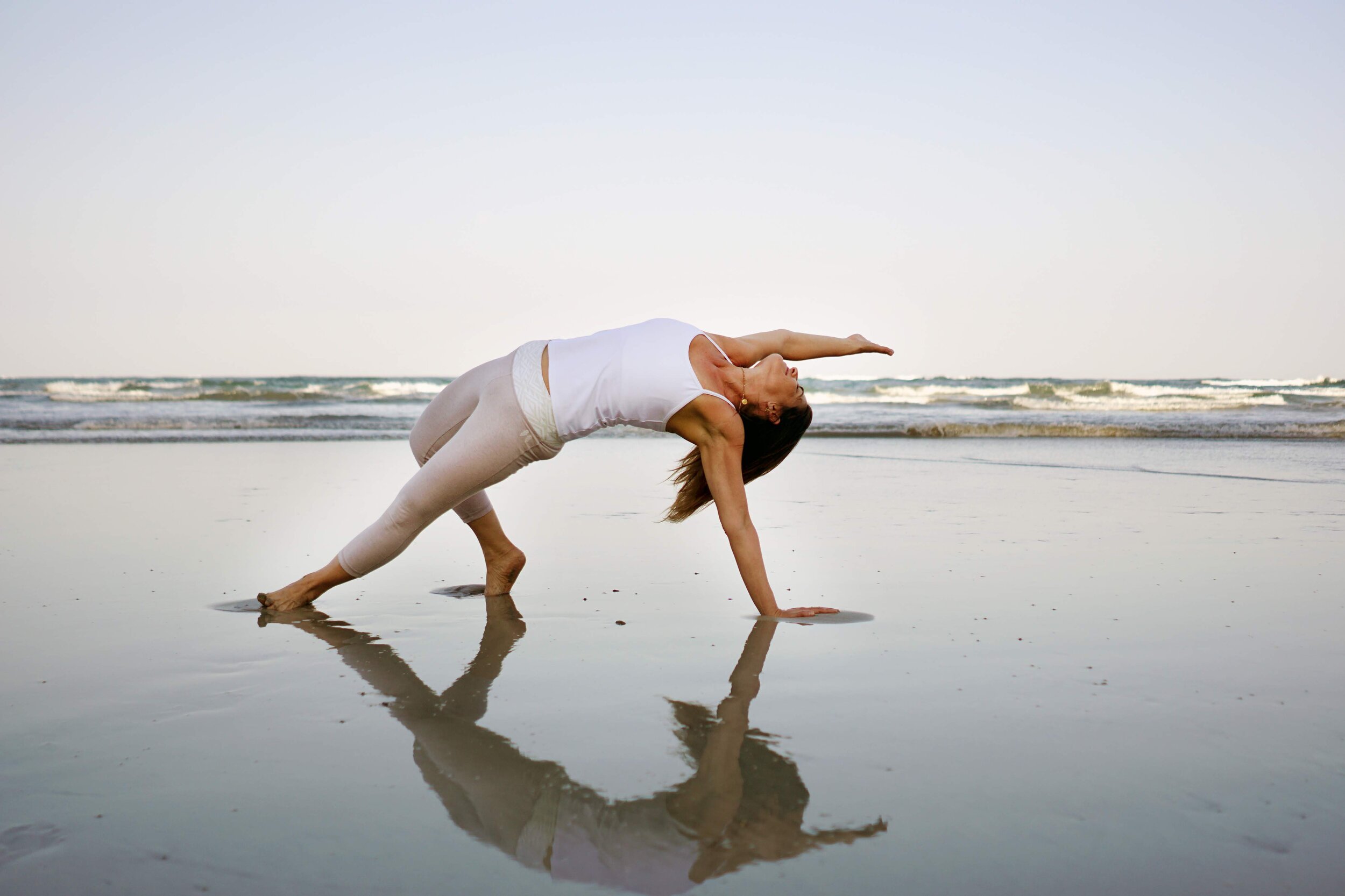
what is slow flow yoga?
practices to calm, clear, and feel more connected
Our bodies know that they belong; it is our minds that make our lives so homeless . . . Our modern hunger to belong is particularly intense. An increasing majority of people feel no belonging. We have fallen out of rhythm with life. The art of belonging is the recovery of the wisdom of rhythm.
—John O’Donohue
Slow flow yoga is a breath-based, mindful movement practice that brings us home to our body, breath, and mind, in the present moment. Think meditation in motion; a mindful flow that invites us to practice slowing down and moving with more awareness, balance, and grace.
There is an emphasis on internal awareness while moving and transitioning with the breath, gently opening the body, and developing more strength, stability, flexibility, and energy. A balance between inn and outer strength and openness.
We cultivate an intimate and dynamic relationship with our breath, our life partner. We create time and space to listen inward to our body, breath, mind, and heart.
We learn how to slow down and move with intention, grow present and aware of what is happening within us as well as around us. This allows us to bring our new level of embodiment and awareness off the mat and out into our lives, where we need it most. Deepening and staying in connection with the breath ultimately deepens the connection with the self. All of my slow-flow classes integrate an emphasis on internal observation, rhythmic breathing, and fully supported rest.
slow flow is deep listening
Slow flow yoga is an amazing vehicle to relieve stress and tension, strengthen our body and help us develop more flexibility and stability. But it also helps us clear and calm our mind, and to create a sense of presence, where we can open our mind and hearts to the present moment more.
Slow flow is as much a deep listening practice as it is about experiencing movement. The pace allows us to find balance and insight through the practice. We learn how not to over effort or over concentrate. In fact, we look for a balance where we are not putting too much emphasis in any one direction. We are both grounding and opening as we need to. Rather than adhering to a general or generic blueprint of alignment, we allow ourselves to create a personal journey—discovering what to do, as we are doing it.
It is a mindfulness practice that helps us develop the ability to be present, and to navigate in real-time, how we want to act, respond, and show up in the world, for ourselves and the mat, and then ultimately, out in the world.
Being gentle, slow, and mindful is not being lazy or passive. It's learning how to balance strength, receptivity, and fluidity while continually making room for the free flow of breath. Over time, mindful movement practices train your mind and body to be more relaxed, aware, stable and curious, which can help you respond to challenging people and stressful situations with equanimity.
slowing down to go with the flow—
cultivating curiosity and presence
How can we practice showing up more openly, more curiously? We can begin on our mats. Yoga is not about “doing” a pose. It's about discovering how we feel in the pose as we are doing it, as we are in it. This distinction is huge, because we usually show up to yoga—and most everything else—having decided a lot of things before we've even gotten there.
When we choose to not decide beforehand how things should be, or will likely be, or even how we hope they will be, we may have a completely different experience. Remaining curious about what’s going on inside us, rather than zipping off to all those other places we’re so used to going, we can more easily practice being relaxed even when we want our conditions to be different.
What if we came to our lives with more wonder? Deep Listening is not about “knowing”—rather it's about receiving, experiencing, discovering, caring, softening . . .
PRACtice WITH ME
FREE slow flow practice
Try this short but potent 8-minute slow flow practice to help you feel more grounded, present, and open.
coming home to breath
Slow flow yoga not only helps us sync movement with the breath, but also helps us create conditions for the breath to flow freely as possible moment by moment. This is important because the less freely we breathe, the more anxious and separate—and less present and integrated—we feel. The good news is: Mindful breathing can break that loop. It’s the fastest, most efficient way to draw ourselves out of that cycle of anxiety (telling our nervous system that we're safe) and into a state where we feel more calm and connected.
When we slow down our breath and become present, it’s like we are recharging ourselves.
Breathing is not an “activity” we need to accomplish. It is simply a process that we allow to happen. The breath is simply waiting for more room so that it can fill us. And we can begin to see how our breath is our life partner, always there for us—without question. Similar to the way we learn to rely on the support of the ground, becoming aware of our partnership with the breath reinforces our experience of connectedness. Of not feeling alone.
Stressful situations will always arise in our life, and sometimes it will feel as if there’s no solid ground to support us. Each time we pause and replace our attention on our breath, our mind comes “home” to our body. Each time we replace our attention on our breath, we grow more deeper roots.
this is the practice
May you allow yourself to LAND on the ground.
The earth longs to hold you.
May you remember you belong on the earth; let yourself land.
Let your breath soften you,
Uncovering layers of you.
Allowing room for you to unfold.
All of you.
May you remember that your breath longs to be with you.
May you arrive with your breath in the present moment.

what are the benefits of slow flow?
Slow flow is a tremendously therapeutic practice, nurturing a deeper connection of breath and movement, grace and strength. Each time you step on the mat, you receive what you need from the practice! Because movement is slower, you have more time to decide what you really need that day, and are able to practice in a way that can move you more deeply into balance in the moment. The main intention is to promote awareness and understanding of subtle body movement and needs, as well as inspire daily internal evolution.
Studies have shown that slow movement with awareness can help alleviate:
Chronic pain and arthritis
Depression
Stress
And promote:
Body awareness
Confidence
Cardiovascular health
Flexibility

suggested reading
If you’d like to learn more about the research supporting the connection between mindful, slow movement and overall well-being, especially around stress and pain, you might enjoy the following resources:
Dr. Richard Davidson (University of Wisconsin)
Yoga and fibromyalgia
Roger Cole, Ph.D., a yoga teacher and research scientist


